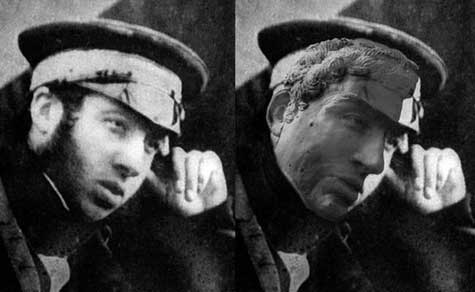
New facial reconstruction technology applied to the skull of one of the members of the ill-fated Franklin expedition may rewrite accepted history. The skeleton long believed to be that of Henry Le Vesconte, a lieutenant aboard HMS Erebus, is now believed to be that of Harry Goodsir, an assistant surgeon and naturalist on the expedition.
New Identity for Arctic Explorer Emerges 140 Years Later
Alan Ogden, of the University of Bradford, created a facial reconstruction using a cast of the skull. They then compared the facial reconstruction with daguerreotypes — essentially old photos — taken for some, but not all, of the officers. They found a likely match in Harry Goodsir, an assistant surgeon and naturalist, who had a bulky, prominent lower lip and a deep groove beneath it that appeared to match the skull’s unusual dental conformation. Raised in Scotland, a location that fit with the results of the chemical analysis, he was described by a shipmate as “long and straight,” and would have been between 26 and 29 years old at the time of his death, an estimate that is younger than the overall impression given by the skeleton, but reasonable, according to the researchers.
They are, however, cautious.
“It is important to emphasize that facial reconstruction can eliminate possible candidates, but it cannot prove identity: It can only indicate a high probability of a match,” the researchers write, pointing out that 10 officers did not have their pictures taken.
All 129 explorers, including Sir Franklin, perished on the expedition and personal identification has been possible for only a few, including Goodsir.
